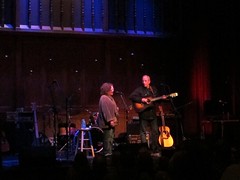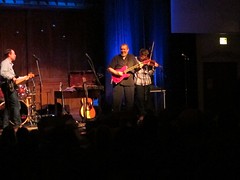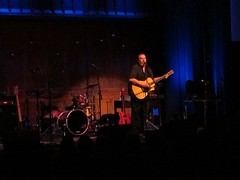Missed connections and missing links
2.25/5.0



The title track starts out awesome, opening with a heavily compressed guitar riff joined shortly afterwards by a harmonized guitar in the foreground. The tone has the visceral slam of AC/DC, but with a mellower retro blues rock pace. The reverberating vocals line up quite nicely with that, giving me a good idea of what it might sound like if Mick Fleetwood fronted a Black Sabbath tribute band. The droning guitars and thick pentatonic riffs conjure up a raw intensity. The bridge turns to old school psychedelia, reminding me of Status Quo's "Pictures of Matchstick Men", and I'm caught up in the hypnotic swirl of distorted guitars. The best part is that it keeps showing kaleidoscope flashes of almost recognizable riffs: a touch of "Iron Man" here, a smear of "Sister Ray" there.
So, six minutes in, I'm thinking this could be the start of something great and I settle in for more. The Bohannon brothers' twin guitar assault continues on "White Widow". The classic rock vamp at the start isn't as catchy as the first track, but the band still plows into the full sound with enthusiasm. The music is pretty decent and the lead near the end throws in some speedier runs, but the initial attraction is starting to fade, in large part because the lyrics can't hold the song together. They sing the lines with gusto, but it's hard to pull a linear theme from lines like, "Who's to say you're out of touch/ Just because you feel so much/ I just got born/ And then I died."
From here, the die is cast: the solid guitar work can never quite overcome the vague or repetitive lyrics. Bohannons slog through a string of hard hitting garage rock, but they never find the momentum that seemed so natural on the title track. Songs like "Dias de Los Muertos" or "Lightning and Thunder" plod along and never really deliver any satisfaction. The best of the lot, "Death and Texas", has a righteous Neil Young shred (in fact it's fairly derivative), but the platitudes about illness and loss offer little insight: "To watch you fade / Day by day / Has got me a little down on God / And his mysterious ways."
I toughed it out to the end, hoping I could salvage some of the magic of that initial taste. The final tune, "Red, White, Black and Pale", is a doom-filled, apocalyptic vision but it doesn't measure up to anything Mike Doughty wrote for his recent ambitious musical, Revelation: A Rock Opera. So, no magic miracles to save the day. It's rare to turn so sharply from hot to cold on an album like this, and I began to doubt my memory. Was I suckered in somehow at the start or did Bohannons lead with an uncharacteristically strong tune? Unlike a disastrous date, there was an easy way to check the facts. I steeled myself, hit replay, and dove back into "Black Cross, Black Shield".
On the second listen, I still enjoyed the song's classic metal grind and dynamic pacing, but I also noticed some cracks in the facade. In particular, the similarity between the chorus and Harry Chapin's "Cat's in the Cradle", became impossible to ignore, even though the band cloaks it in wailing guitar tone. That revisit makes it easier for me to send Black Cross, Black Shield on its way with no regrets. It's not fundamentally flawed, but we're just not compatible after all.
2.25/5.0




Did you ever have one of those first dates that started out so promising, but then left you checking your watch, waiting for it to be over? It's like the person could hold it together for the first five or six minutes, but no matter how intriguing and cool they seemed then, the rest of the evening had them unraveling until you wondered if that first impression was just a fluke. Maybe you even began to question your earlier enthusiasm. That's exactly where I find myself with Bohannons' Black Cross, Black Shield.
The title track starts out awesome, opening with a heavily compressed guitar riff joined shortly afterwards by a harmonized guitar in the foreground. The tone has the visceral slam of AC/DC, but with a mellower retro blues rock pace. The reverberating vocals line up quite nicely with that, giving me a good idea of what it might sound like if Mick Fleetwood fronted a Black Sabbath tribute band. The droning guitars and thick pentatonic riffs conjure up a raw intensity. The bridge turns to old school psychedelia, reminding me of Status Quo's "Pictures of Matchstick Men", and I'm caught up in the hypnotic swirl of distorted guitars. The best part is that it keeps showing kaleidoscope flashes of almost recognizable riffs: a touch of "Iron Man" here, a smear of "Sister Ray" there.
So, six minutes in, I'm thinking this could be the start of something great and I settle in for more. The Bohannon brothers' twin guitar assault continues on "White Widow". The classic rock vamp at the start isn't as catchy as the first track, but the band still plows into the full sound with enthusiasm. The music is pretty decent and the lead near the end throws in some speedier runs, but the initial attraction is starting to fade, in large part because the lyrics can't hold the song together. They sing the lines with gusto, but it's hard to pull a linear theme from lines like, "Who's to say you're out of touch/ Just because you feel so much/ I just got born/ And then I died."
From here, the die is cast: the solid guitar work can never quite overcome the vague or repetitive lyrics. Bohannons slog through a string of hard hitting garage rock, but they never find the momentum that seemed so natural on the title track. Songs like "Dias de Los Muertos" or "Lightning and Thunder" plod along and never really deliver any satisfaction. The best of the lot, "Death and Texas", has a righteous Neil Young shred (in fact it's fairly derivative), but the platitudes about illness and loss offer little insight: "To watch you fade / Day by day / Has got me a little down on God / And his mysterious ways."
I toughed it out to the end, hoping I could salvage some of the magic of that initial taste. The final tune, "Red, White, Black and Pale", is a doom-filled, apocalyptic vision but it doesn't measure up to anything Mike Doughty wrote for his recent ambitious musical, Revelation: A Rock Opera. So, no magic miracles to save the day. It's rare to turn so sharply from hot to cold on an album like this, and I began to doubt my memory. Was I suckered in somehow at the start or did Bohannons lead with an uncharacteristically strong tune? Unlike a disastrous date, there was an easy way to check the facts. I steeled myself, hit replay, and dove back into "Black Cross, Black Shield".
On the second listen, I still enjoyed the song's classic metal grind and dynamic pacing, but I also noticed some cracks in the facade. In particular, the similarity between the chorus and Harry Chapin's "Cat's in the Cradle", became impossible to ignore, even though the band cloaks it in wailing guitar tone. That revisit makes it easier for me to send Black Cross, Black Shield on its way with no regrets. It's not fundamentally flawed, but we're just not compatible after all.

 Southern rock formed like a metamorphic mineral deposit when blues, country, rock and folk were combined and transformed under the social pressures below the Mason-Dixon Line. While the West Coast hippies spiraled off into loosely structured jams, bands like the Allman Brothers captured a laid back country blues that built on relatively coordinated musical arrangements. Later, Lynyrd Skynyrd, Molly Hatchet, and others expanded on the sound, but the country influence grounded the music with a folksy genuineness that contrasted with more flamboyant psychedelic excursions. Listening to
Southern rock formed like a metamorphic mineral deposit when blues, country, rock and folk were combined and transformed under the social pressures below the Mason-Dixon Line. While the West Coast hippies spiraled off into loosely structured jams, bands like the Allman Brothers captured a laid back country blues that built on relatively coordinated musical arrangements. Later, Lynyrd Skynyrd, Molly Hatchet, and others expanded on the sound, but the country influence grounded the music with a folksy genuineness that contrasted with more flamboyant psychedelic excursions. Listening to  The guitar strings pop and tick like a cooling engine, hinting at long drives and endless roaming. The smell of hot blacktop seems to hang in the background of each of
The guitar strings pop and tick like a cooling engine, hinting at long drives and endless roaming. The smell of hot blacktop seems to hang in the background of each of  Some things never change. Oh, the record label can change. They can have the band streamline and change their name. They can even bring in a new producer to change the sound. With the opening grunge grind of “
Some things never change. Oh, the record label can change. They can have the band streamline and change their name. They can even bring in a new producer to change the sound. With the opening grunge grind of “ At some point, every kid wants to grow up to be just like his dad someday. When your dad is Ali Farka Touré, known as Africa’s John Lee Hooker, then those are some bigger shoes to fill. The challenge was even harder after Ry Cooder introduced him to a wider American audience with their 1994 collaboration, Talking Timbuktu.
At some point, every kid wants to grow up to be just like his dad someday. When your dad is Ali Farka Touré, known as Africa’s John Lee Hooker, then those are some bigger shoes to fill. The challenge was even harder after Ry Cooder introduced him to a wider American audience with their 1994 collaboration, Talking Timbuktu. 

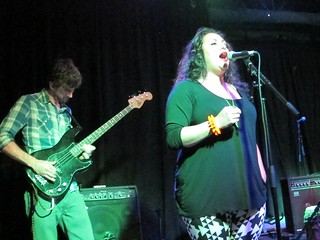


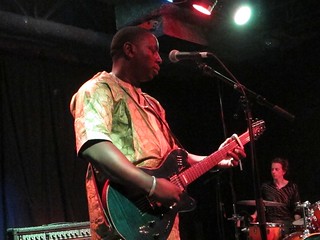



 Jimi Hendrix’s posthumous musical fragments are more plentiful than pieces of the True Cross. While they probably have better provenance than Christ’s relics, we’re still picking over Hendrix’s bones. American culture has always been celebrity-obsessed and Jimi is a perfect candidate: he was charismatic, he transformed the electric guitar and he died young with too much potential. James Dean, Lenny Bruce and John Keats may have all been lost before their time, but unlike them, it’s not enough for us to revisit the work Hendrix released during his lifetime. We can’t let him rest in peace because three studio records and one live album can’t meet our insatiable need for more. Perhaps First Rays of the New Rising Sun or its progenitors Cry of Love and Rainbow Bridge might fit into the canon of legitimate recordings released after his death because that was what he was working on at the end. But his music has been packaged and repackaged so many times over the years that it’s lost its impact. By the time Crash Landing (1975) came out, producer Alan Douglas resorted to tarting up the tracks with overdubs, taking them out of their original context. It seems like every inch of audio tape Hendrix touched has been released on one questionable project or another.
Jimi Hendrix’s posthumous musical fragments are more plentiful than pieces of the True Cross. While they probably have better provenance than Christ’s relics, we’re still picking over Hendrix’s bones. American culture has always been celebrity-obsessed and Jimi is a perfect candidate: he was charismatic, he transformed the electric guitar and he died young with too much potential. James Dean, Lenny Bruce and John Keats may have all been lost before their time, but unlike them, it’s not enough for us to revisit the work Hendrix released during his lifetime. We can’t let him rest in peace because three studio records and one live album can’t meet our insatiable need for more. Perhaps First Rays of the New Rising Sun or its progenitors Cry of Love and Rainbow Bridge might fit into the canon of legitimate recordings released after his death because that was what he was working on at the end. But his music has been packaged and repackaged so many times over the years that it’s lost its impact. By the time Crash Landing (1975) came out, producer Alan Douglas resorted to tarting up the tracks with overdubs, taking them out of their original context. It seems like every inch of audio tape Hendrix touched has been released on one questionable project or another. Don't worry about the pun in the title, this is anything but a comedy album. This is a country rocking, blues wailing, soul screaming message from the depths of the dirty South.
Don't worry about the pun in the title, this is anything but a comedy album. This is a country rocking, blues wailing, soul screaming message from the depths of the dirty South. 










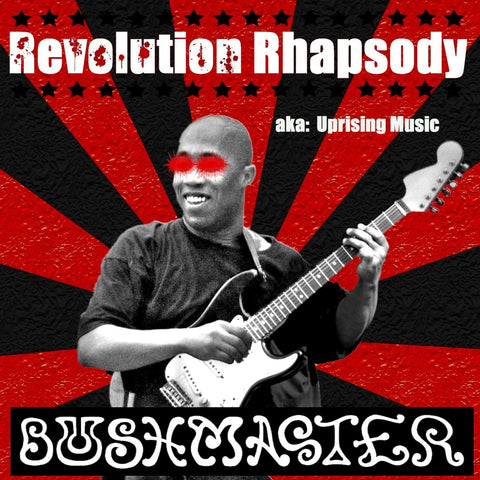 Some bands embrace a retro sound as homage or to prove a certain kind of affiliation. Others are trying to capture a time or feeling that resonates with their psyche. Gary Brown's
Some bands embrace a retro sound as homage or to prove a certain kind of affiliation. Others are trying to capture a time or feeling that resonates with their psyche. Gary Brown's 
